Sample handling is an often overlooked aspect of stormwater sampling that can have a significant impact on the accuracy of your results. The keys to proper sample handling are to ensure that the sample bottles remain clean throughout the sampling process and that those samples are properly stored between the time that they are taken and the time they are delivered to the lab. Here are a few techniques you can use to ensure that your samples accurately represent the conditions at your site.
1. Disposable Gloves
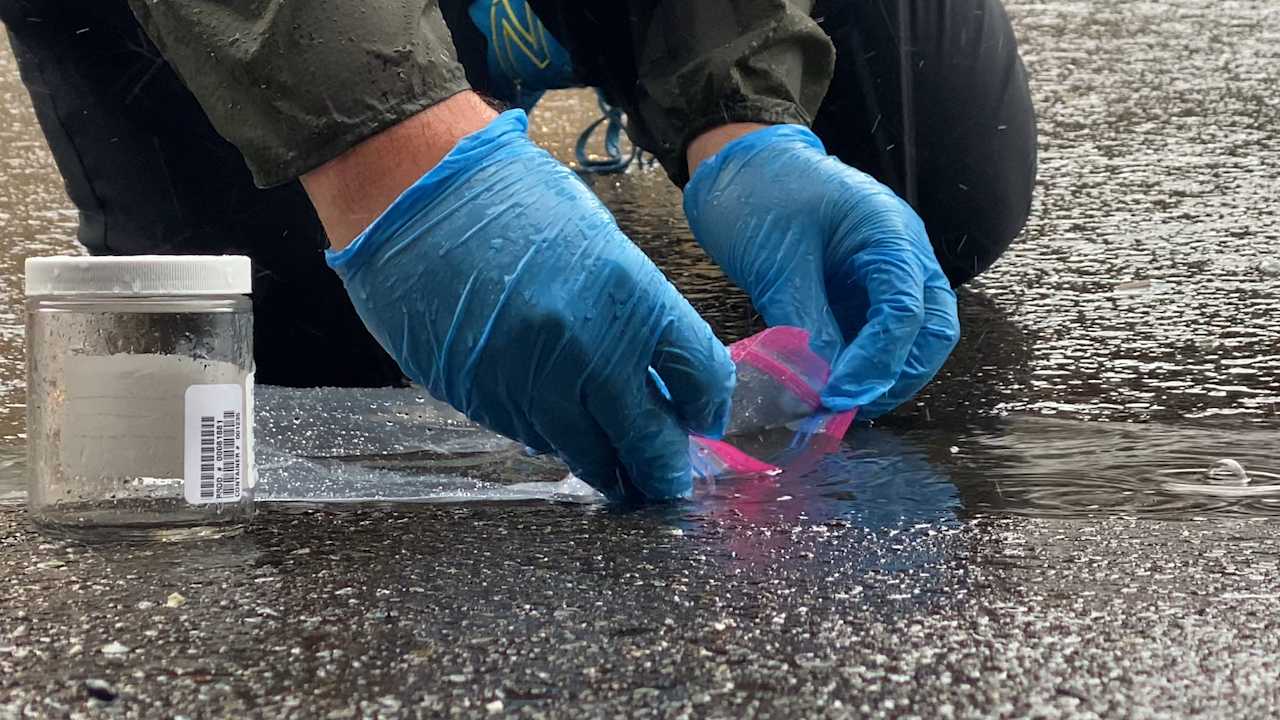
Stormwater sampling begins with the basics, and one fundamental aspect is the use of gloves. Wearing gloves while sampling is a non-negotiable practice to help protect you while sampling, and to prevent contamination of a sample. As mentioned in our “Stormwater Sampling Kit” article, gloves should be powder-free varieties of Nitrile, Latex, or Vinyl and should have a proper fit to ensure dexterity when sampling. It is not enough to just have a pair of gloves on while sampling, we want to make sure that our gloves are clean. This requires frequent changing of gloves between samples or any time a glove becomes dirty from touching potentially contaminated material. Remember that many of our samples are working on the parts-per-billion scale (1 ppb is roughly 1/2 tsp in an Olympic-sized swimming pool), so even the tiniest amount of contamination from your hands or a dirty glove can have a significant impact on your sample results.
2. Clean Hand, Dirty Hand
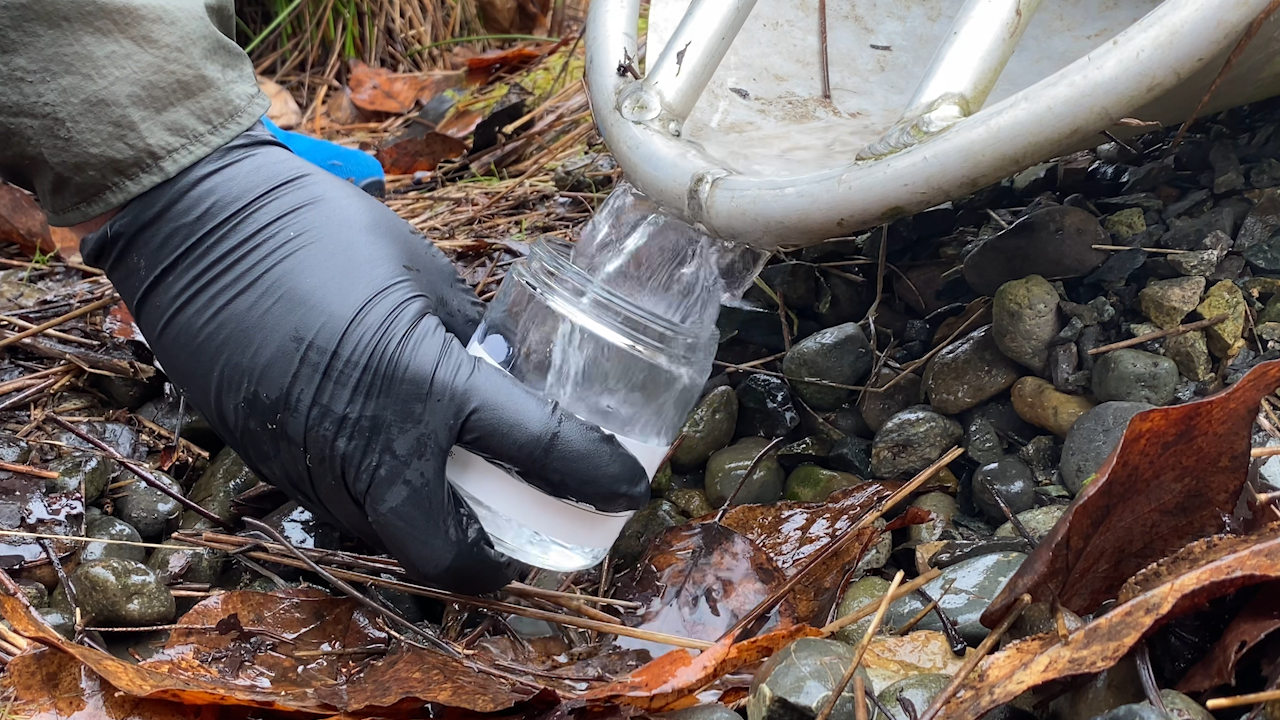
“Clean Hand, Dirty Hand” is a technique that takes glove-wearing to the next level. This technique is an added step to ensure that the gloves you are using are clean, and contain no material that could contaminate your sample. To execute, you simply dedicate one hand to be the “clean hand”- this hand will only perform tasks that occur near the lid of an open sample bottle such as lid removal and replacement. Your other hand will be dedicated to other tasks such as opening the cooler, handling any last-minute tools you need to access, and holding the bottom of the bottle away from the opening. Your “dirty” hand should remain as clean as possible, and gloves should continue to be changed frequently.
3. Multi-Glove Technique
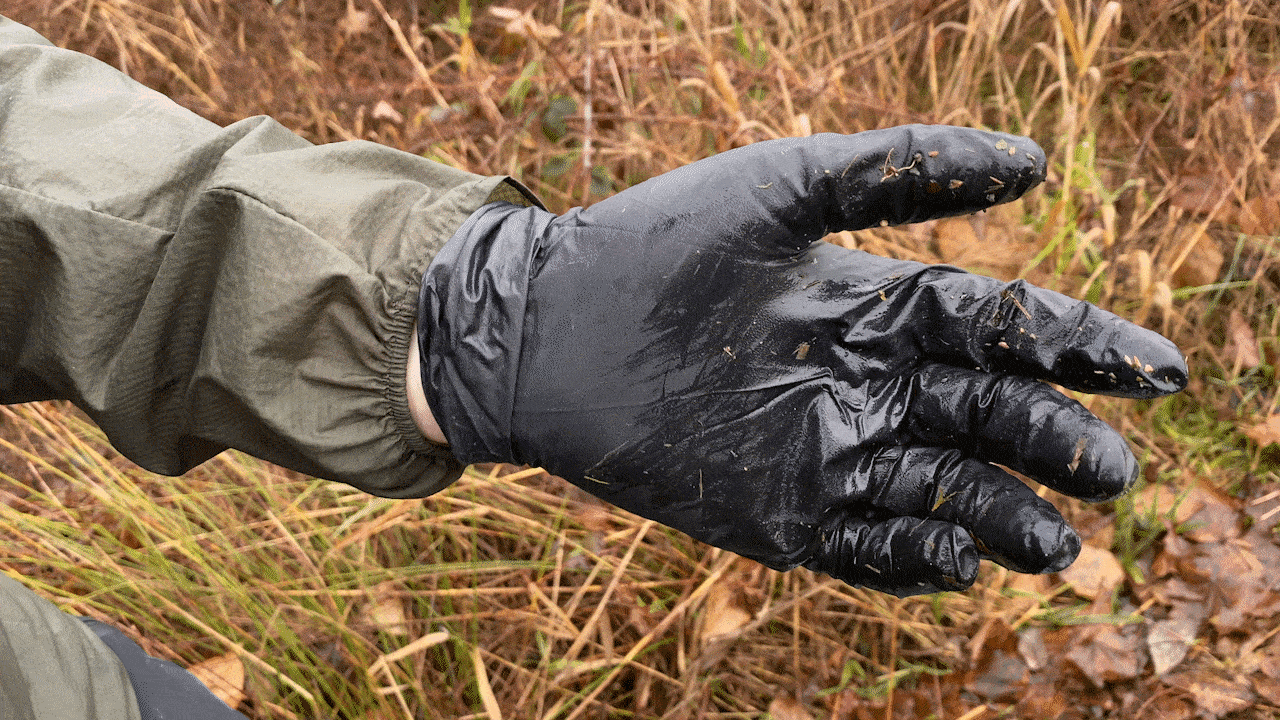
Wearing multiple pairs of gloves on your hands is a great way to ensure you always have a clean glove ready to go. Often, there is a temptation to just take your sample wearing dirty gloves if you have to remove debris at the last minute. By wearing multiple gloves on each hand, that temptation is eliminated, as you simply slip off the dirty glove and have a clean one underneath. There’s no need to go hunt for your box of gloves. This technique is also great for switching gloves between sample bottles for multiple samples taken at one sample location.
4. Buddy Sampling Technique
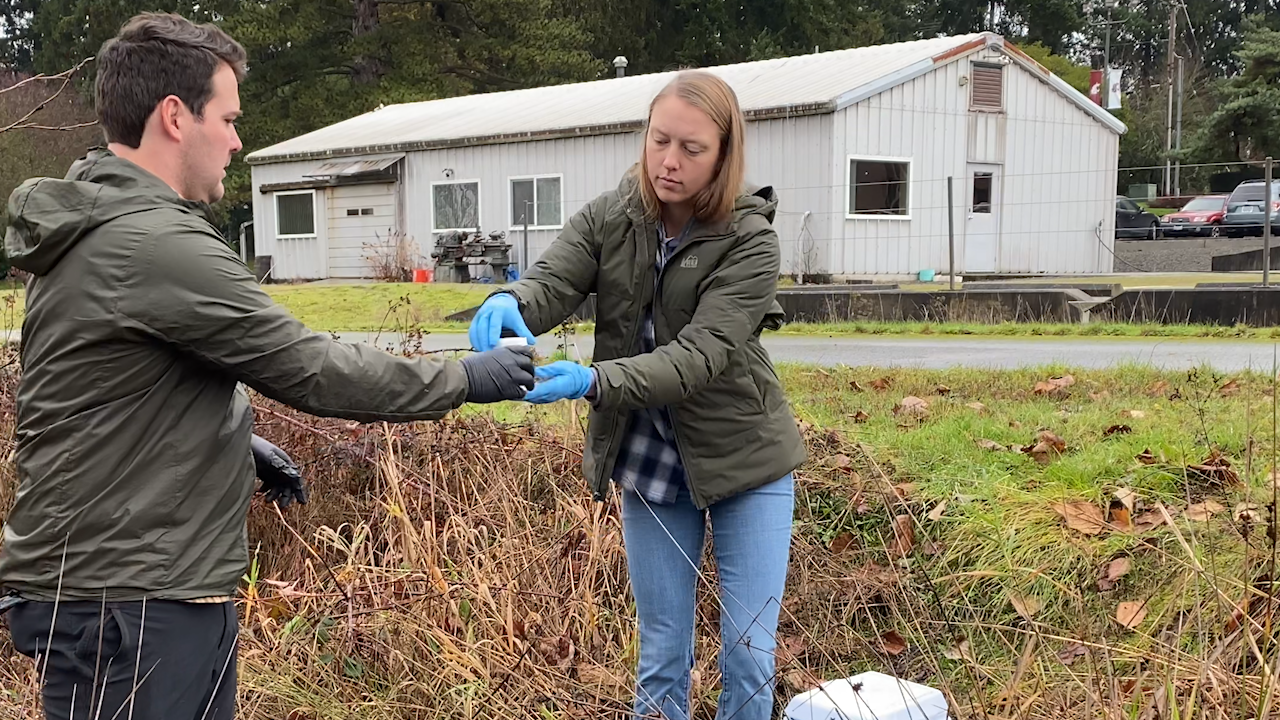
Having a helper around offers a great advantage when taking stormwater samples. This helper can help ensure safety, be an extra set of eyes for potential contamination sources on your site, and can also make sample handling a breeze. When you have a helper available, designate one person to do all of the dirty work involved in the sampling process. Those tasks might be debris removal, note-taking, retrieving equipment, or moving closed sample bottles into and out of the ice chest. The other person should only be doing the tasks that require clean, uncontaminated gloves- namely removing the bottle lid and taking the sample.
5. Clean Work Surface
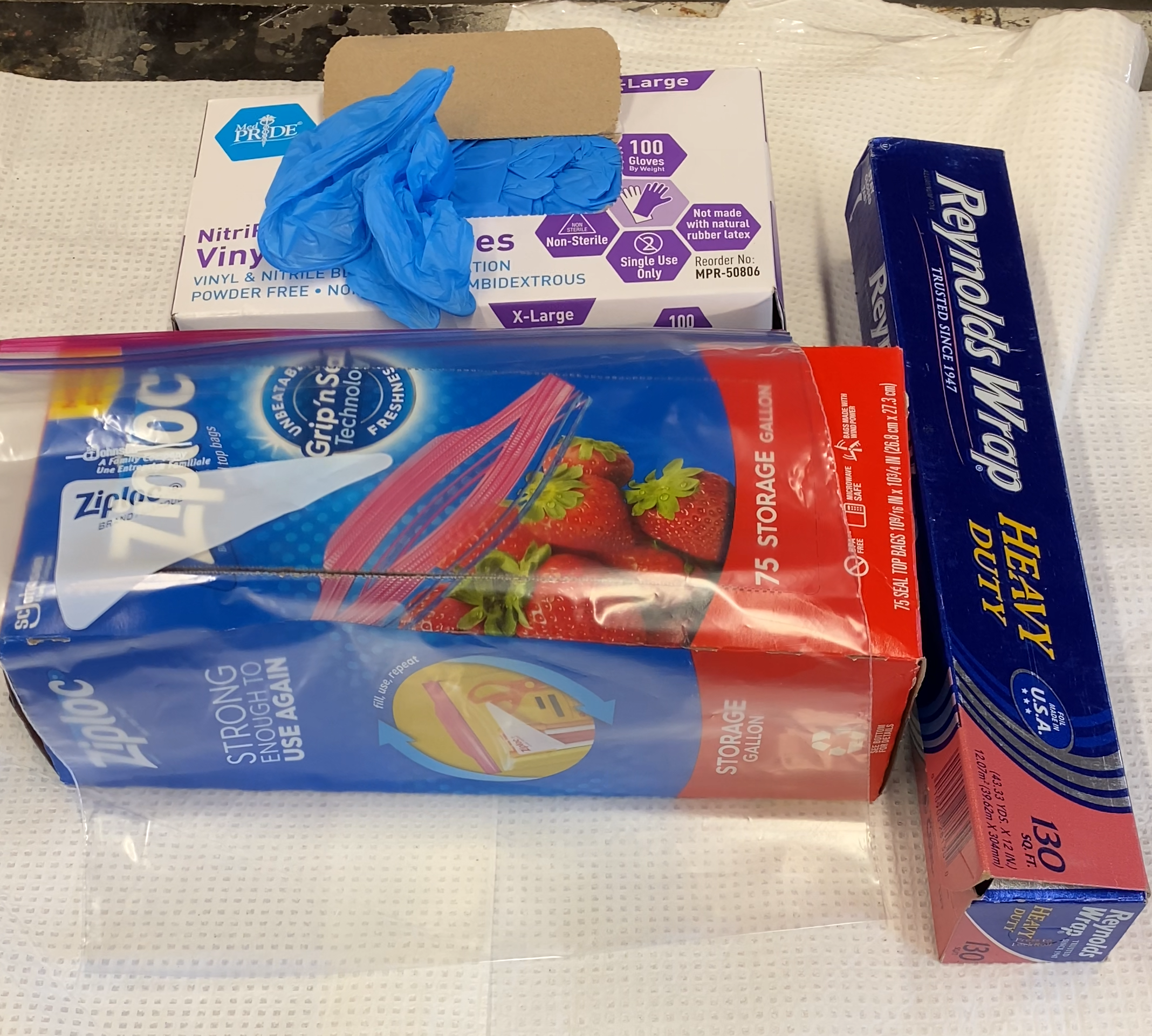
Truly clean work surfaces can be hard to come by; this is especially true when working in the field and in rainy conditions. Luckily, there are some inexpensive items we can find at any grocery store that can help us create a clean area for our samples and sampling supplies.
Ziplock Bags provide us with a clean and dry space for all sorts of sampling scenarios. In many cases, it may require two hands to take a sample. Placing the lid of that sample bottle down on the ground is a quick way to contaminate your sample. Slipping it in a ziplock bag allows us to store the bottle lid wherever convenient. Ziplock bags also provide a waterproof container for anything we want to stay dry. The gallon size is perfect for stowing a piece of paper such as our Chain of Custody Form, or a site map.
Aluminum Foil also has a ton of uses in a sampling scenario. One use is to spread a few sheets out to turn your tailgate or other surface into something clean enough to process samples on. This scenario is especially useful when measuring things like pH and turbidity, or in the rare case that a preservative needs to be added to your sample in the field. Foil can also be improvised into a temporary clean bottle lid, or wrapped around equipment that has been cleaned to preserve that cleanliness until it is time to be used.
6. Organization

Staying organized is likely the most important sample-handling tip. There can be a lot of moving parts that come with a sampling day. You want to stay organized and ensure:
- You have all of the sample bottles and equipment ready for when your site discharges. Discharge events can be unpredictable, especially during the first flush season. Watch the weather, and make sure all of your equipment is in clean and functioning condition, and that you have the bottles you need from your lab well before the rain is scheduled to arrive.
- All of your samples are taken at the correct sampling locations. In some instances, there may be multiple pipes all coming into the same catch basin. You want to make sure you know where each of these pipes are coming from, and which one is representative of the area you are sampling. You don’t want to mistakenly sample a pipe that is coming off of your neighbor’s property and take the hit for their pollution.
- All of your samples are properly labeled. Pay extra attention that you have the correct sample location for each bottle, and that the information on your bottles matches the information on the Chain of Custody.
- Your COC form is filled out properly. Your Chain of Custody is critical to ensure that you have the correct analysis done on your samples and that your samples remain traceable to both you and your sample locations.
- Field data and field notes are filed properly. The data you are taking in the field, such as pH and Turbidity can easily be misplaced if you aren’t careful. Take the extra few moments to file it away properly so that it is available for your reporting duties.


